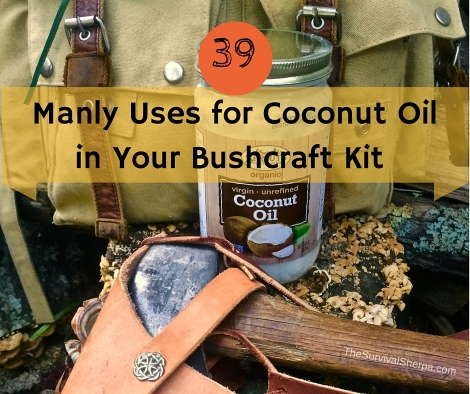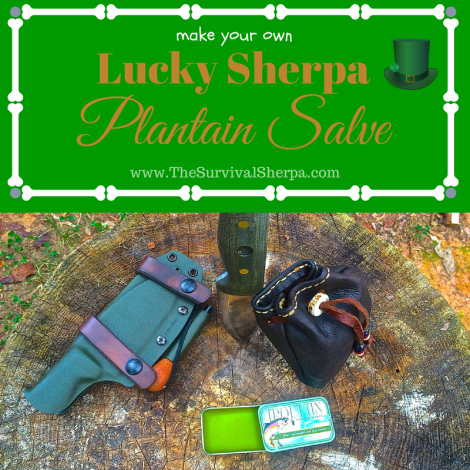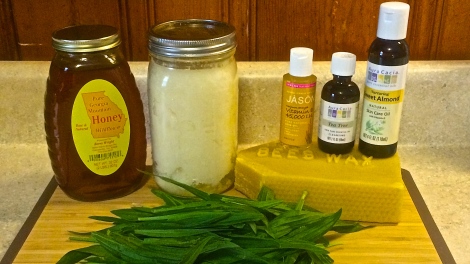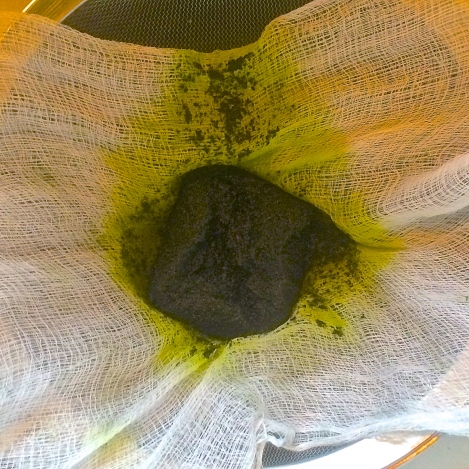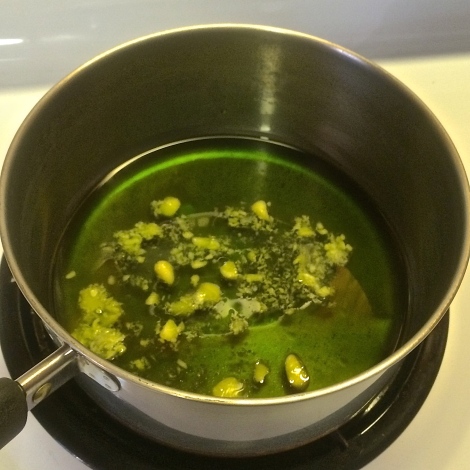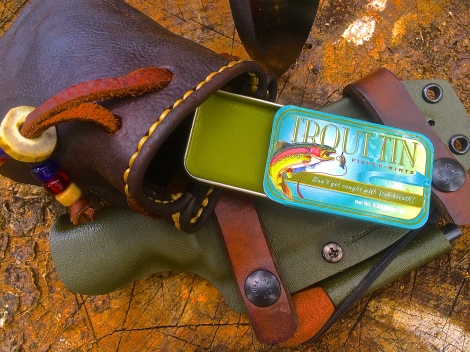by Todd Walker
When it comes to packing for an outdoor adventure, leave the single-purpose items at home unless you have a pack mule to carry it all. Each item in your camping/bushcraft/survival kit should be able to perform at least three different tasks beyond its intended purpose.
Manly woodsmen, listen up. The women folk are more aware of the benefits and well ahead of us in using this stuff. Time to catch up!
It may not be as sexy as an ax or knife, but smart woodsmen should pack this non-sexy stuff in all their kits – bushcraft, EDC, Get Home Bag, camping, etc. I rarely go to the woods without it. As a utilitarian resource, I also keep a small container in my shop, bathroom, kitchen, school desk, and truck.
Here’s your multi-tasking resource…
Coconut Oil (CO)
There’s more to this tropical oil than its many health benefits. The saturated fat (medium-chain triglycerides) in CO burns quicker in your body than other fats boosting your metabolic rate and energy level. Don’t fall for the Big Fat Lie and fears of high cholesterol. The healthy fats in CO have been found to raise HDL (good) cholesterol and lower the ratio of LDL to HLD.
The eastern woodlands is not a tropical paradise. You won’t find coconut trees growing along the banks of the Chattahoochee. Still, CO is inexpensive and readily available. For the best health benefits, stock up on expeller pressed, organic, unrefined virgin coconut oil (industry experts label extra-virgin as a marketing ploy). This type of CO has a stable shelf life of 2 to 5 years.
Repack the CO in smaller containers and add them to your survival kits. The anti-bad-stuff properties alone make CO an essential resource to carry on your next wilderness adventure.
- Anti-bacterial – treats skin infections and kills bacteria
- Anti-viral – kills many common viruses
- Anti-fungal – effective on Candida; yeast infections, diaper rash, and lady-parts infections
- Anti-inflammatory – suppresses inflammation and helps repair tissue
- Anti-parasitic – helps rid your body of pesky parasites like tapeworm and lice
- Anti-microbial – fights infection from bacteria, viruses, yeast, and fungi without harming beneficial gut bacteria
- Anti-protozoa – kills giardia, a common protozoan infection from drinking untreated water
- Anti-pyretic – reduces fever
Coconut Oil Uses in Bushcraft
There are 4 categories below where coconut oil is your pursuit of bushcraft skills.
Self-Aid
If natural plant-based remedies are not available, CO is an excellent option for the most common injuries you’ll experience in the woods – cuts, scrapes, bruises, burns, sprains, bites and stings.
- Cuts and scrapes: a thin layer applied forms a protective barrier against bacteria and foreign matter.
- Bruises: speeds up healing by repairing tissue.
- Burns: apply immediately to affected area and repeat as necessary
- Bites and stings: relieves itching and stinging. Better yet, make your own Plantain Salve with 3/4 cups of CO using this recipe.
- Chapped lips and skin: softens and moisturizes cracked, dry lips and relieves psoriasis and other skin conditions.
- Sunburn: relieves the burn and heals the affected skin.
- Sunscreen: not a high SPF but adds a little protection for your skin.
- Nose bleeds: coat the nasal passage with a layer if you’re prone to nose bleeds in certain weather conditions.
- Allergies: CO is a solid around 76º F. Melt CO and snort/sniff it up your nose to coat sinuses and protect from pollen. Also helps kill airborne germs associated with flu and colds.
- Salves: add healing herbs to make a salve.
Personal Hygiene
- Shaving: use it as a shave cream and after shave if you need to shave on your adventure. Or grow a beard…
- Beard: yep, it’ll condition, tame, and sanitize any mountain man beard. Stops the itching too!
- Soap: use CO as a soap substitute.
- Foot care: nothing like a good foot massage after a day of trekking. Rubbing CO on your feet also kills harmful fungi and bacteria on the skin and toenails. Effective on athlete’s foot. Feet are likely your only means of conveyance. Take care of them.
- Maceration: wet feet that look like prunes are asking for blisters and can cause painful cracks after drying. Rub CO on your soles before putting on clean socks and footwear. Apply a coat to dry feet and wear socks in your bedroll for overnight moisturizing and protection for the following days trek.
- Teeth and bones: brush your teeth with a mix of CO and baking soda. I use CO for Oil Pulling too. Aids in absorption of calcium and magnesium for strong bones and teeth.
- Deodorant: CO alone is somewhat effective as a deodorant. Or you can make an aluminum-free all-natural deodorant stick ahead of time so you don’t smell like Sasquatch. Your camp mates will thank you!
- Bushcraft Dog: works on pets too. Apply to your dog’s skin and coat for any itchy issues.
Field Gear Maintenance
- Leather: cleans, conditions, and preserves leather in the field.
- Wood: apply a coat to ax handles, wooden spoons, and buck saws as a preservative.
- Metal: wipe down your cutting tools with a thin layer of CO to prevent rust.
- Lubricant: use to lube your crosscut/bucksaw for smooth sawing. A dab in the socket of your bearing block on a bow drill set reduces friction.
- Cleaner: add an abrasive like baking soda to CO to scrub sticky stuff of knives and other gear. Even works on pine sap.
- Fixin’ Wax: CO can be substituted for the tallow in my Fixin’ Wax recipe.
- Oil lamp: not a maintenance item per se, but CO can be pressed into service as fuel for slush/oil lamps.
- Rust remover: coat area and let it sit for an hour. Rinse with warm water.
- Waterproofing: seals seams in leather and canvas.
- Non-toxic: clean your eating knife and utensils with CO. Safe for animals and humans.
Camp Cooking
- Cooking oil: CO is an excellent butter substitute.
- Oxidation: less heat sensitive than vegetable oils so there’s less oxidation from heat. CO is more stable for stir-frying squirrel and sauteing wild edibles.
- Coffee: add a heaping spoonful to your campfire coffee to start your day in the woods.
- Hot Cocoa: I’ve dubbed cocoa/cacao the 11th C of Survivability. Adding CO to this rich beverage only cements the meal-in-a-cup on top of the list of stuff to never leave out of your kit.
- Flavor: my nephew, Jake, cooked a snake on our backpacking trip with unrefined CO.
- Energy: eat a tablespoon, with or without other food, to boost energy and endurance.
- Vitamin absorption: CO helps your body absorb fat soluble vitamins, minerals, and amino acids.
- Colon detox: shown to reduce waste and toxins from your digestive tract.
- Constipation: squatting in the woods, the perfect human potty position, when your system is backed up is a physical challenge. CO contains fiber and helps get stuff moving after that campfire chili encounter. No more “grrrrrrrrr” sounds coming from the latrine bushes.
- Diabetics: CO is associated with insulin and blood sugar control.
- Spread: use it as a spread on your bannock, dutch oven biscuits, or anything you’d slather butter on at home.
If you got this far, I need to add a CYA statement. I’m not giving medical advice nor am I a health care provider. This stuff is for informational purposes only and comes from my experience with coconut oil. Do your own research.
This is only a fraction of the manly uses of CO in the great outdoors. I’m sure you’ve got unique, unorthodox ways to use this magical oil. Share in the comments if you don’t mind.
Keep Doing the Stuff of Self-Reliance,
Todd
P.S. – You can also keep up with the Stuff we’re Doing on Twitter, Pinterest, Google +, YouTube, Instagram, and Facebook… and over at the Doing the Stuff Network.
P.P.S – If you find value in our blog, Dirt Road Girl and I would appreciate your vote on Top Prepper Sites! You can vote daily by clicking here or on the image below. Check out all the other value-adding sites while you’re there… 
Thanks for Sharing the Stuff!
Copyright: Content on this site (unless the work of a third-party) may be shared freely in digital form, in part or whole, for non-commercial use with a link back to this site crediting the author. All links in articles must remain intact as originally posted in order to be republished. If you are interested a third-party article, please contact the author directly for republishing information.

